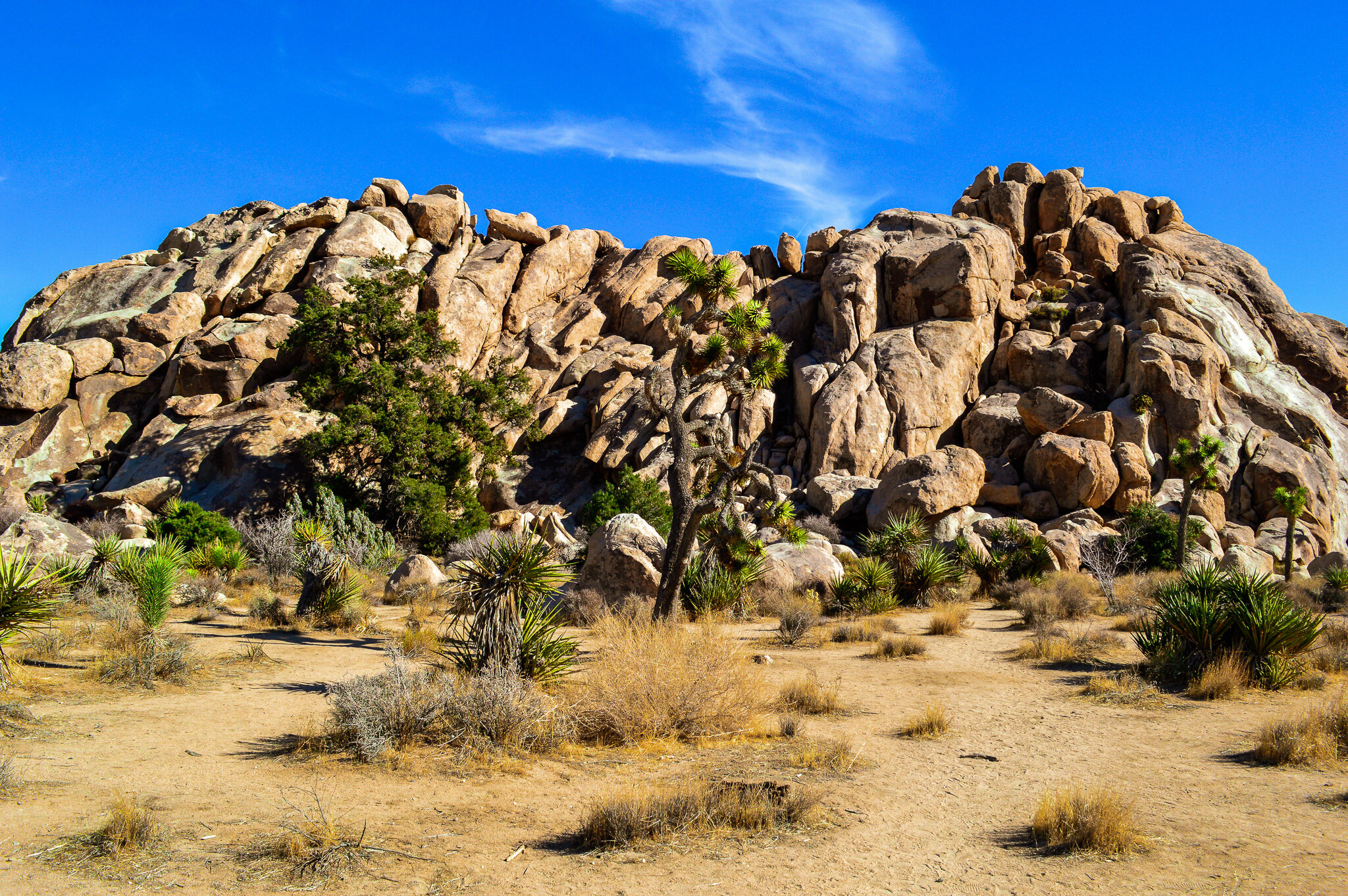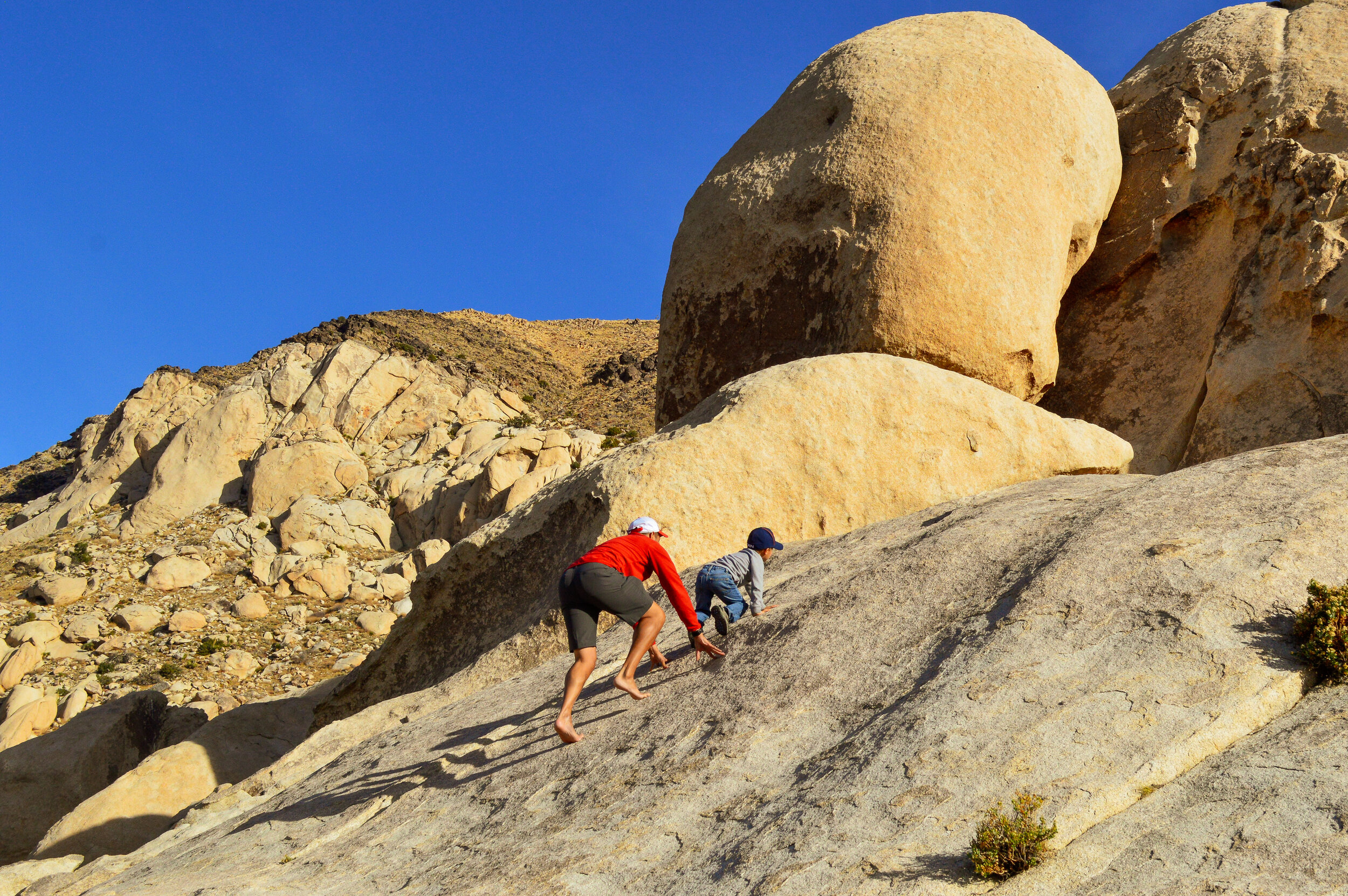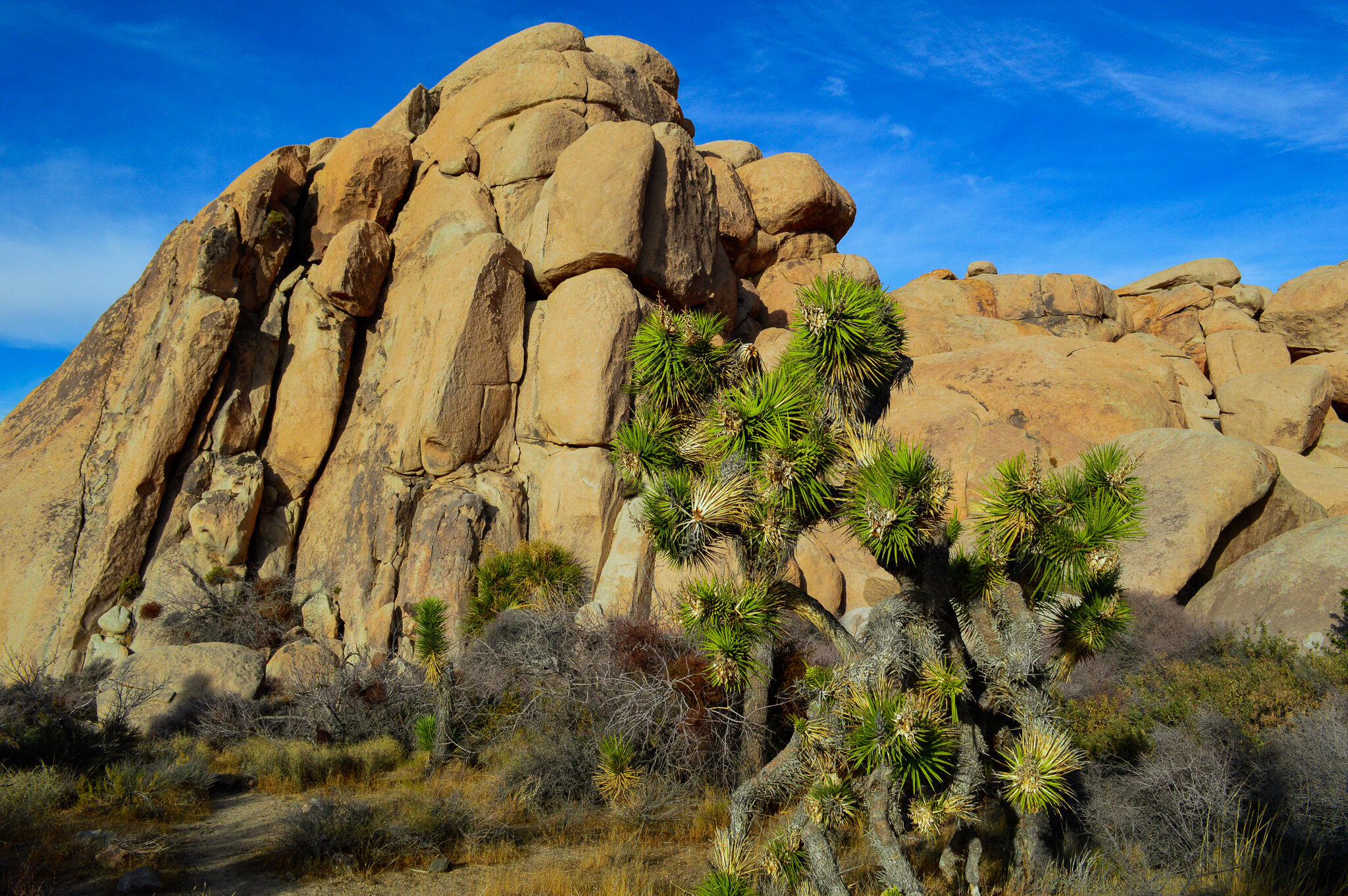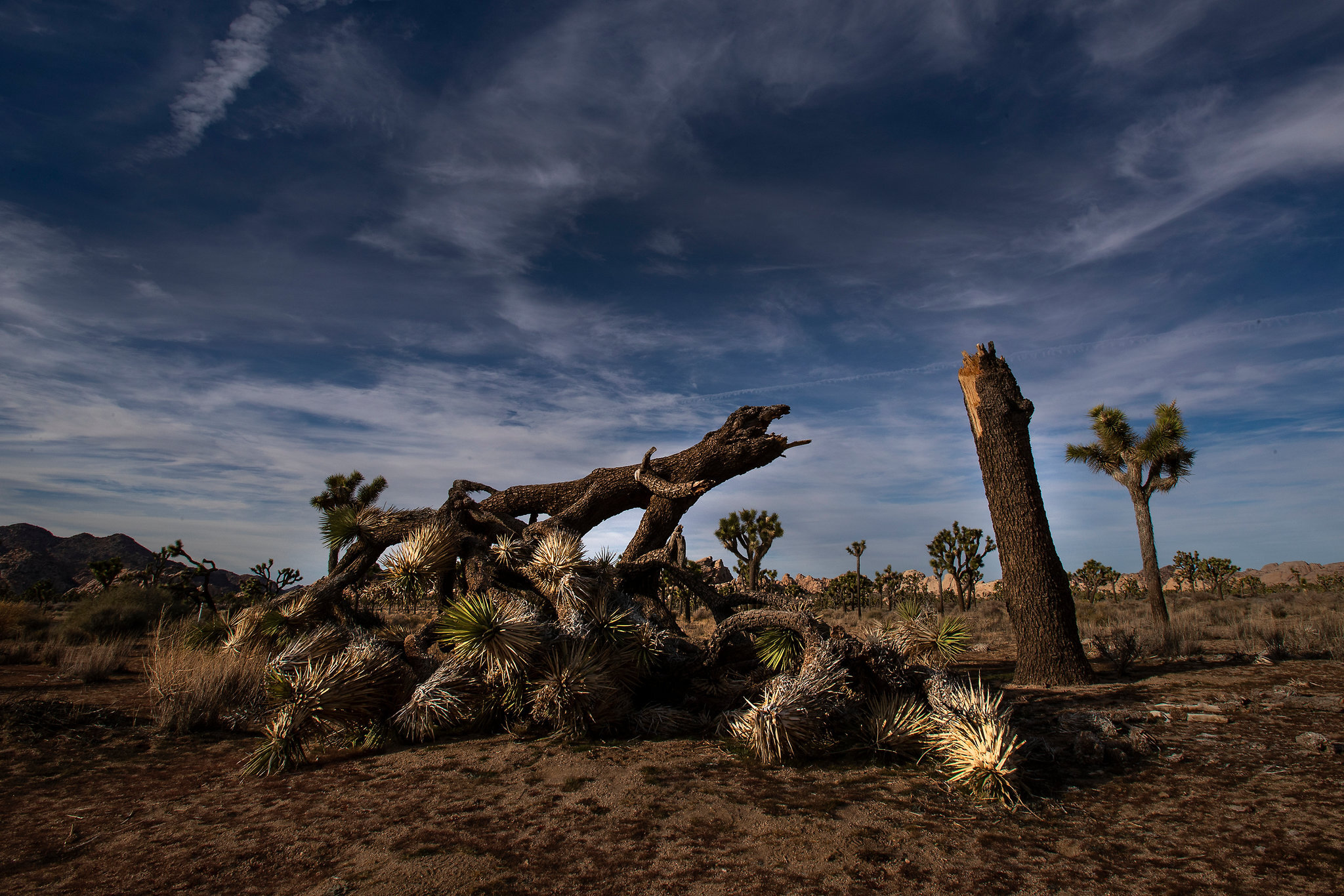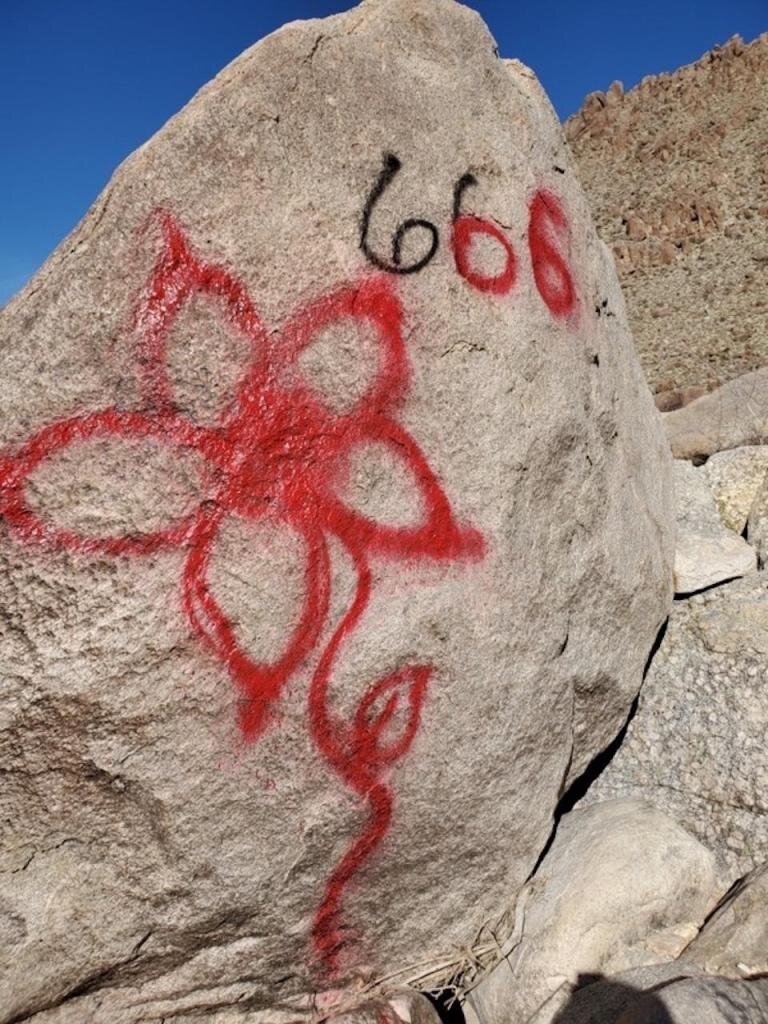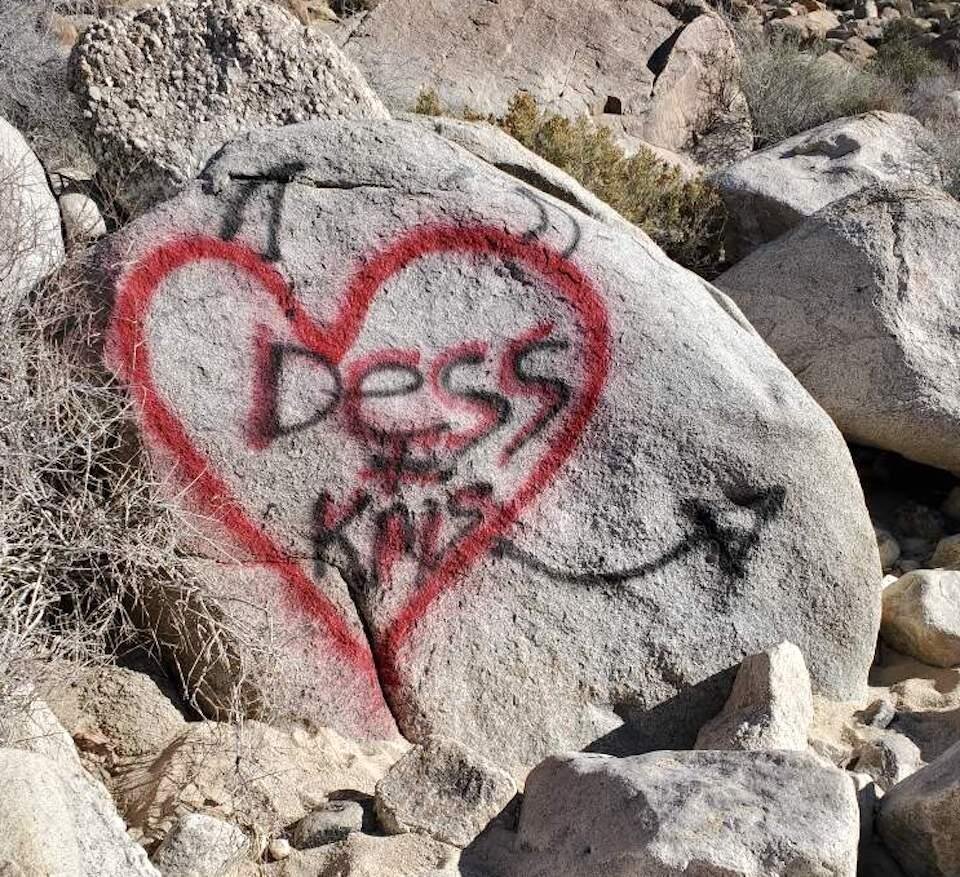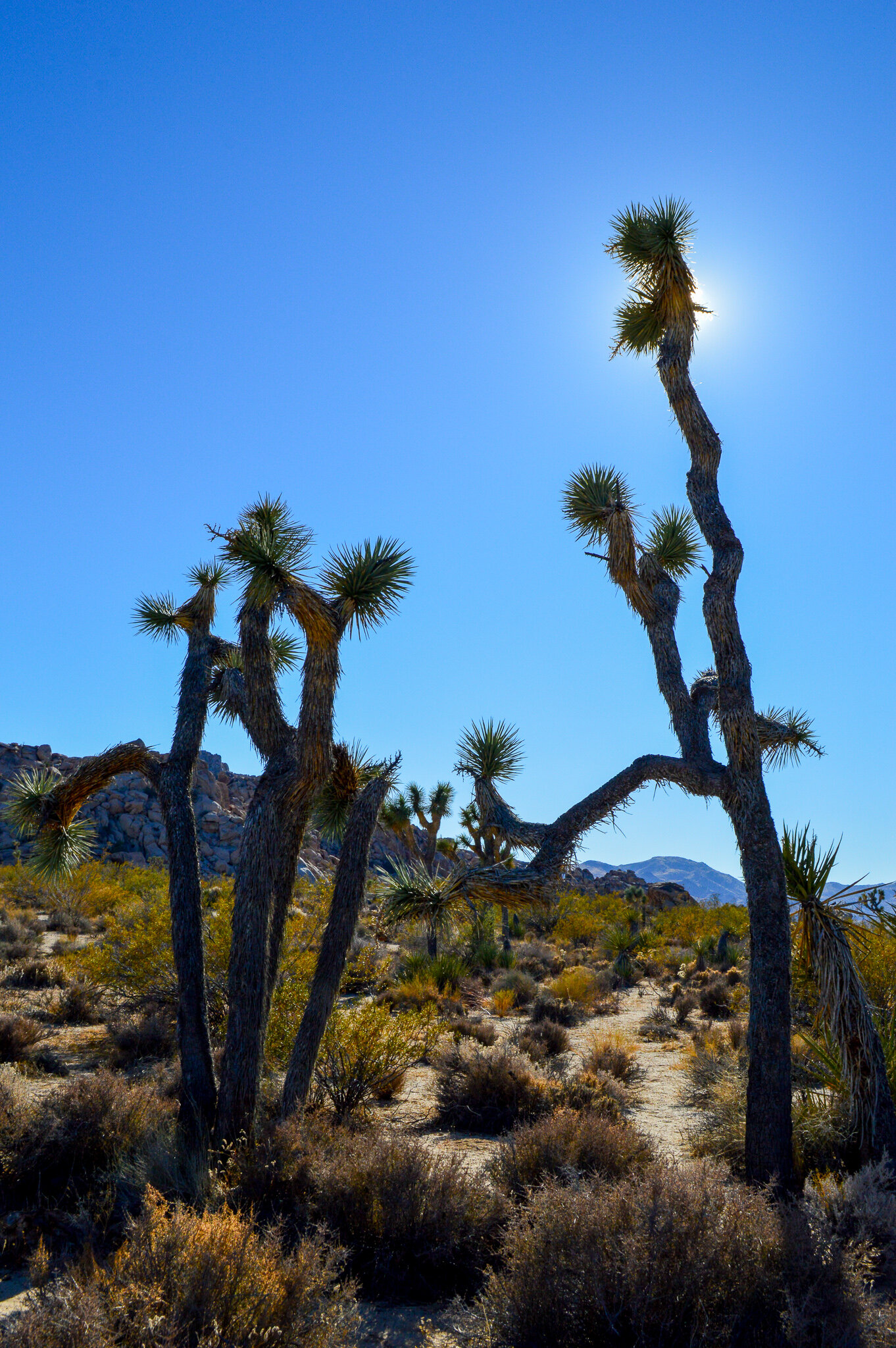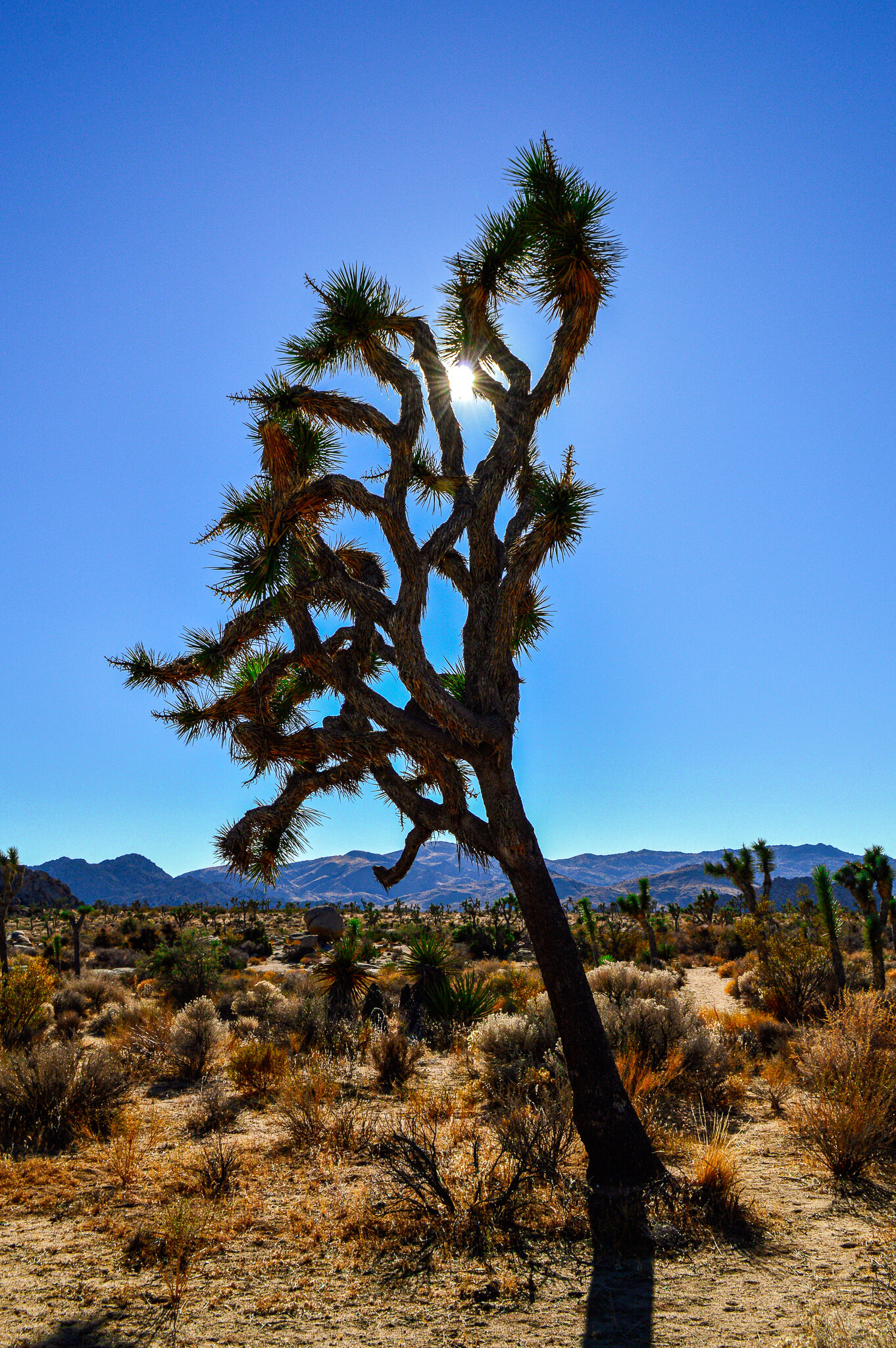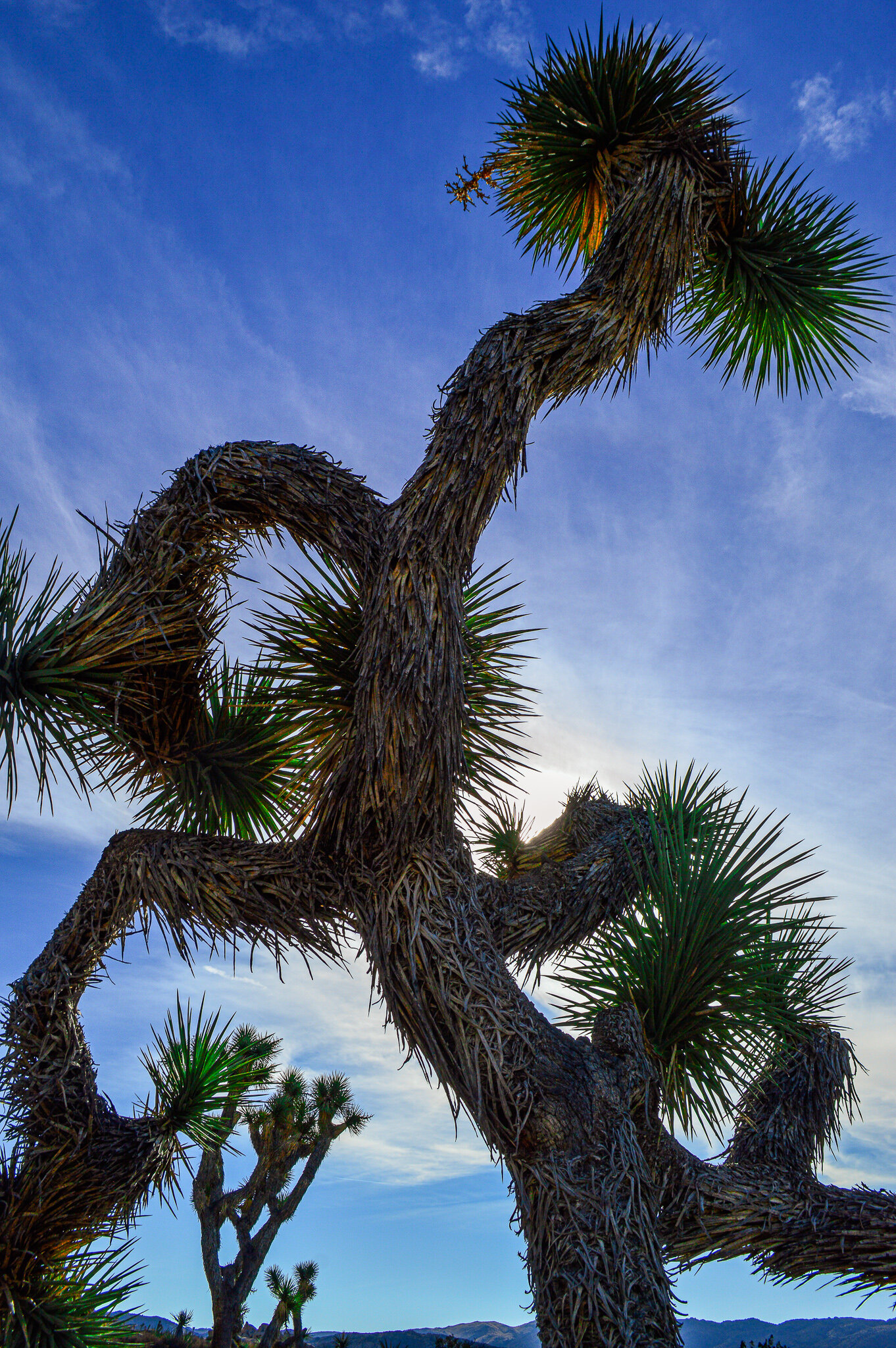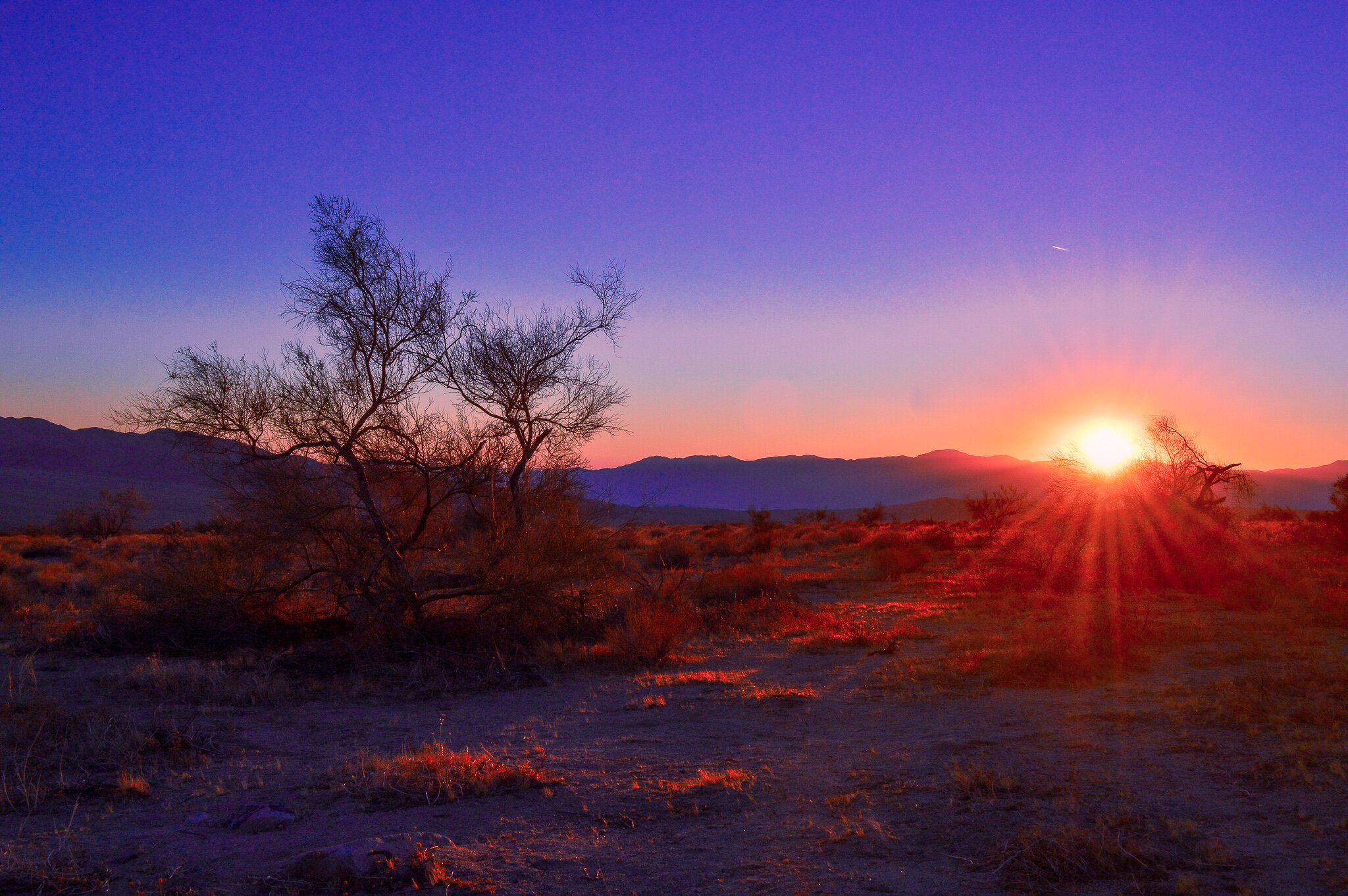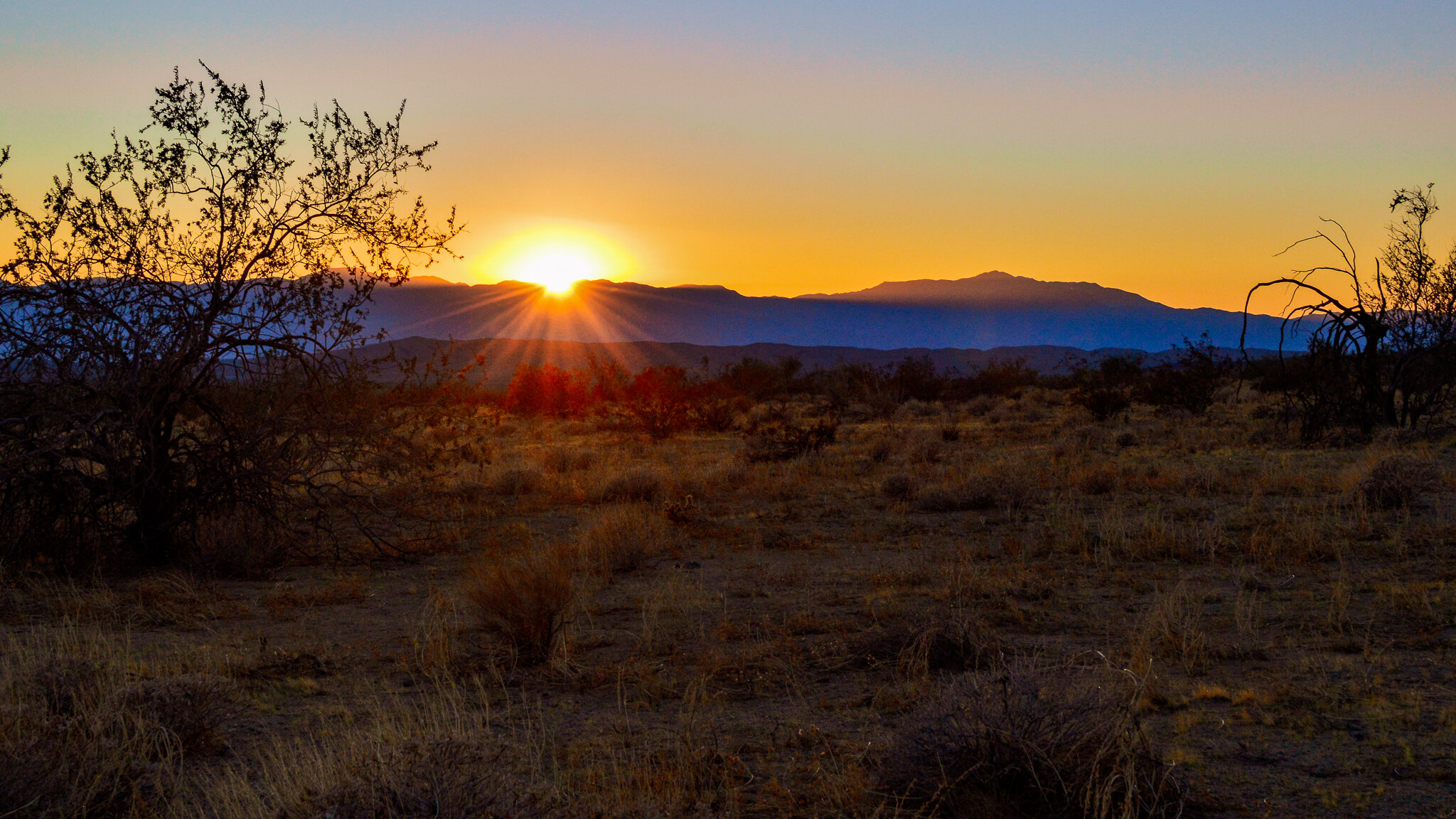Joshua Tree National Park

Winter had set in, and we found ourselves at the intersection of the Mojave and Colorado Deserts of Joshua Tree National Park in Southern California. Known for rugged rock formations with world-class rock-climbing set within a stark desert landscape, we spent nearly 11 weeks exploring this section of desert that is larger than the state of Rhode Island. With winter temperatures averaging 60 degrees, this family experienced our first winter without snow, our first winter in the tiny house without a single frozen pipe, and our first winter among several desert ecosystems that felt more than isolated, and almost lonely at times.
Joshua Tree’s nearly 800,000 acres join together three of California’s ecoregions, giving the park very distinct regions. The drier, more thinly vegetated eastern side of the park sits at the base of the Pinto Basin and rock-studded Eagle and Coxcomb Mountains. With most of this area being wilderness and very few maintained trails, we found vast washes and seemingly sparce wildlife a complete change to the types of hikes we had grown comfortable with.
Much of the hiking in this area is simply walking into the desert...for as long or as short as you want....no real end point or destination. Since we are typically accustomed to hiking to a specific destination (a mountain peak, or waterfall, or lake, etc.) it was totally out of our comfort zone to hike in such an unstructured manner. Yet spending that time alone with lack of direction had its own sort of appeal (and frustrations). On one hand, you are free to explore, climb, and rest whenever you want to. It’s an introspective type of hiking that we don’t do very often.
On the other hand, you feel lost; there is no trail to follow, no goal to reach...you are just wandering in the desert. While the landscape seems monotonous, filled with varying degrees of brown, Joshua Tree NP is actually renowned for its plant and animal diversity - 813 higher plant species, 250 bird species, 57 mammal species, 40 reptile species, and thousands of species of arthropods (like the 4-inch-long tarantula I nearly stepped on!). Many of these resident critters remain elusive, choosing to spend their days in cooler underground dens or under the cover of shrubs and bushes, once again adding to the lonely feeling of isolation in the desert.
The lower Coachella Valley in the southeastern part of the park holds dunes, grasslands, and wildlife-rich palm tree oasis that provided ample opportunities for more traditional hikes and were far more visually interesting (in our opinion). Climbing up to the ridge of the Thousand Palms Canyon and traversing across the acres of sand dunes that sweep down from the little San Bernardino Mountains provided beautiful sweeping views of the Coachella Valley. This particular area contains a rare desert wetland and two palm oases (several sections which had recently been struck by lightning!) containing the only palm tree native to California, the California fan palm which is home to many rare and endangered species.
The parks higher and wetter western side is certainly the more popular region of the park, containing most of the namesake Joshua Trees, as well as hundreds of house-sized granite boulders that attract nearly 10% of the parks visitors for rock climbing adventures. With most of the tourist traffic funneling thru the western entrance, we found this area interesting, though an area we mostly tried to avoid. Not being rock climbers ourselves, we found the lack of consciousness most tourists to the park had for the boundaries and regulations off-putting. Turns out we weren’t the only ones to think so!
While there are nearly 200 miles of trails throughout the park, officials closed many maintained trails and Native American sites to the public due to graffiti and vandalism, which saw an uptake during the government shut-down in late 2018 and continued into early 2020. Rangers and super intendents noted:
By the time the [government] shutdown finally ended, a National Park Service survey of the damage found Joshua Trees chopped down and left on the ground, vandalism to rocks, the cutting open of chains and locks used to close the campgrounds, and the discovery that people coming into the park had driven off-road so extensively that two new vehicle pathways were cut through previously pristine desert areas.” - https://www.lamag.com/citythinkblog/joshua-tree-goverment-shutdown/
Vandalism had gotten so out of hand in early 2020, the staff at Joshua Tree requested the public’s help in finding the person or persons responsible, including spray-painted graffiti found in the western side of the park throughout Jan of 2020.
What is particularly sad about this vandalism is the perspective of time in which these natural attractions took to create, and the mere minutes it took to vandalize. The Joshua Tree (whose outspread branches inspired Mormons to name them after the biblical Joshua, arms raised in supplication to the sky) can live up to 150 years and used to be wide-spread throughout the southwest regions of the US; now due to pollution and human destruction have a range that is projected to be reduced by 90% at the end of this century. The formation of the incredible rock outcroppings began over 100 million years ago as magma cooled into stone and eventually cracked under pressure. Now, several are littered with graffiti that can be difficult to remove (if at all). In some cases, the attempt to remove the graffiti further erodes the rocks and doesn’t always remove the paint.
While the desert can be harsh, the ecosystem can be delicate and the destruction of plants as quintessential as the Joshua Tree can have far reaching impacts to other plants and animals in the park. Take for example, the pollination of the Joshua Tree (a 40-million-year-old tale of coevolution and in our humble opinion a complete marvel of nature). Yucca moths mate on Joshua tree branches, and the female layers her eggs in the flowers to hatch (all the while collecting pollen thru the process). As the moth eggs hatch, the larvae eat the Joshua tree seeds, leaving just enough behind for a new plant to grow. Each Joshua tree can only be pollinated by this single species of yucca moth; neither can exist without the other. So what happens when kids from LA decide to cut down the tree for fun? Irreparable damage that could take centuries to fully recover. According to Curt Sauer, a former superintendent of the park, “What’s happened to our park ... is irreparable for the next 200 to 300 years.”
Given that, I recommend you find your way to Joshua Tree quickly; you don’t know how long it’s beauty will sustain. We feel lucky to have spent so much time here and enjoyed the change of pace for this typical snow bound family. We missed the snow and will likely find a way to winter in a place a bit colder next year, but it was fun to be snowbirds for the season and start our exploration of California in such a unique national park.











